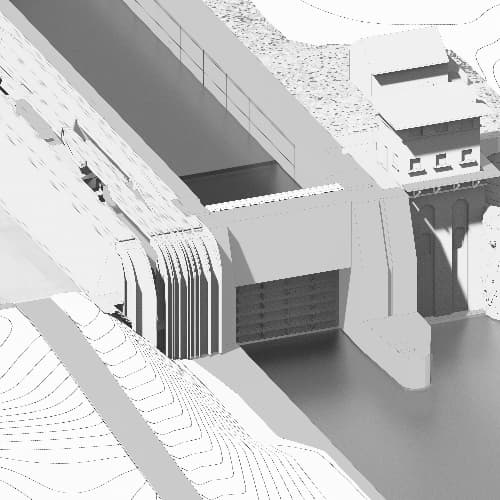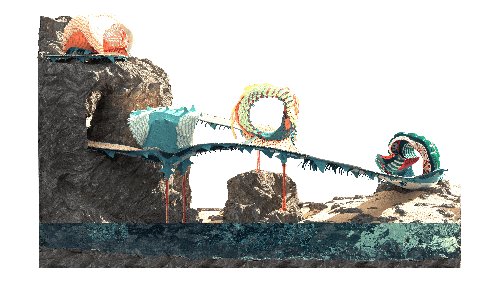

Chasm
When Thomas Jefferson was first shown the plan for the Erie Canal in 1809 he responded with four words: 'little short of madness' Jefferson's words remind us that through the entanglement of nature, technology, and commerce, architecture enters the realm of madness.

Endangered
Currently, there is hardly any piece of nature we humans haven't touched or had an impact on. Because of this, we have greatly damaged and desensitized our connection with it reducing our usual awe-inspired reaction from its sublime quality to an everyday indifference. And worse - ecosystems and organisms we are seemingly so separate from have deteriorated to only a fraction of what they used to be because of our influence. My pathway and pavilions are intended to bring our attention back to these endangered animals and plants of the sea to raise awareness for the damage we've caused. Using the uncanny and abstract forms of these species I wanted to make architectural follies that would recreate that sublime reaction from nature we've fallen out of touch with and showcase a side of nature we normally wouldn't see. Earnst Haeckel, a zoologist who illustrated and documented many of the animals and plants I used in my design had the same intention when he originally set out to catalog them. He wanted to show the people of his time a side of nature they might not have known even existed.